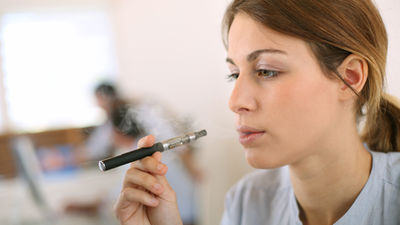Research results that driving a new car for a long time poses a health risk

For many car enthusiasts, there is no better time than to smell a new car while driving. However, studies from the United States and China have found that staying in a new car for long periods of time puts you at risk of exposure to chemicals that exceed safety standards.
Observation, prediction, and risk assessment of volatile organic compounds in a vehicle cabin environment - ScienceDirect

Driving a Brand New Car Could Come at a Cost to Your Health : ScienceAlert

Materials that emit
This time, a research team led by Petros Koutrakis of the Harvard School of Public Health and Haimei Wang of the Beijing Institute of Technology found that carcinogenic chemicals exceeding safety standards were detected inside new cars exposed to the scorching sun. I was.
For example, formaldehyde emitted from disinfectants, disinfectants, gas stoves, etc. was 35% higher than China's safety standards. In addition, acetaldehyde, a carcinogenic substance, exceeded the safety standard by 61%.
Benzene, a carcinogenic substance found in paints and cigarettes, poses a relatively low level of risk to front-seat passengers who spend less time on the road each day, but the impact on drivers who spend more time on the road is dangerous. had reached a level.

For the experiment, a medium-sized plug-in hybrid SUV, which was new within one month of manufacture, was used. The research team left the vehicle outdoors for 12 days and exposed it to sunlight before analyzing air samples inside the vehicle with gas chromatography-mass spectrometry.
In evaluating the health risks of chemical substances, assuming a taxi driver who drives a car for 11 hours a day and a passenger who rides a car for 1 hour and 30 minutes a day, the measured chemical substances are transdermally ingested or inhaled. The effect of doing so was investigated. Most of the effects of VOS were due to breathing.
The result is below. As a result of analyzing a total of 20 kinds of chemicals, formaldehyde, which is also included in disinfectants and disinfectants, acetaldehyde, which is a carcinogenic substance, and 2-ethylhexanol (2), which causes nausea and headaches when inhaled. -Ethylhexanol) was found to be released in large amounts.

Of these, benzene (left), formaldehyde (middle), and acetaldehyde (right) were examined for the 'estimated cancer risk' of drivers and passengers. It was confirmed that the level of 10-6 (red line), which is the standard for 'potentially at risk', was exceeded.

In this experiment, we also found that the emission of VOS was not due to the temperature inside the car, but due to the surface temperature of the materials inside the car.
Professor Oliver Jones of RMIT University, Australia, who was not directly involved in this research, told the Science Media Center, 'Many people, including myself, like the smell of new cars, but it's been around for a long time. It turns out that some of the chemicals in the interior of a new car are not very good: Many of the chemicals, such as acetaldehyde, benzene, formaldehyde, hexanal, and styrene, which come from the plastics and adhesives inside the car, are designated carcinogens. Just because they're present doesn't necessarily mean they're a problem, but depending on how much they get into the body, they can be harmful, and that's the focus of the newly published research.' bottom.
Related Posts:







